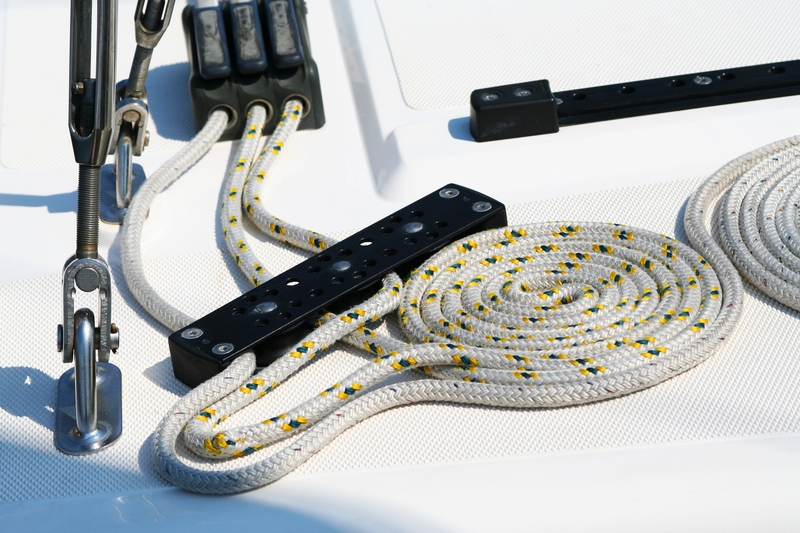Enjoy a Fresh Sofa for Years with Expert Storage Practices
Your sofa is more than just a piece of furniture; it's the centerpiece of your living room, a gathering spot for family, and a haven for relaxation. To keep your couch or sofa looking and feeling fresh for years, mastering expert storage practices is essential! Whether you're putting your sofa away for a move, during renovations, or for seasonal storage, the right strategies make all the difference. Read on for a comprehensive guide to ensure your sofa maintains its beauty, comfort, and longevity through proper storage techniques.
Why is Proper Sofa Storage So Important?
Before learning the best storage practices, let's explore why you should prioritize storing your sofa correctly:
- Prevents Mold & Mildew: Storing a couch in a damp or unventilated environment can lead to unpleasant odors and even health hazards.
- Maintains Upholstery Quality: Proper sofa storage guards against dust, stains, and sun damage that can degrade both fabric and leather sofas.
- Prolongs Structural Integrity: Cushions, springs, and frames all benefit from a storage environment that's dry, clean, and temperature-controlled.
- Saves Money: A well-preserved sofa means you won't have to replace or refurbish your couch as often.

Preparing Your Sofa for Storage: The Essential Steps
For effective sofa maintenance while in storage, thorough preparation is key. Follow these steps for best results:
1. Clean the Sofa Thoroughly
- Vacuum: Use a vacuum with upholstery attachment to remove dust, crumbs, and hidden dirt from all surfaces, especially under cushions and in crevices.
- Launder or Wipe Covers: If your sofa has removable covers, check manufacturer instructions for washing. For non-removable fabric, use a recommended upholstery cleaner.
- Spot Clean: Address any stains with a gentle cleaner appropriate for your sofa's material (fabric, leather, or velvet).
- Leather Sofas: Wipe down with a damp (not wet) cloth, followed by a leather conditioner to maintain suppleness and prevent cracking.
Allow your sofa to dry completely before moving on to next steps.
2. Disassemble Where Possible
- Remove legs, arms, cushions, and any detachable parts if possible. This prevents breakage and makes your sofa storage more efficient and safe.
- Store screws and hardware in a labeled bag attached securely to the sofa frame to avoid losing key components.
3. Protect with Wrapping Materials
- Wrap your entire sofa in protective covers, such as breathable furniture covers or moving blankets. Avoid plastic wrap, as it can trap moisture and encourage mildew growth.
- If you must use plastic, keep it loose and ensure airflow.
- For extra protection, use cotton or muslin sheets over the primary wrap to guard against dust.
Selecting the Best Storage Environment for Your Sofa
The conditions where you store your sofa directly impact its longevity and appearance. Here are vital considerations:
1. Choose a Climate-Controlled Storage Unit
- Temperature fluctuations and humidity cause fabric and leather to deteriorate. Moisture can lead to wood warping and mold on cushions.
- A climate-controlled storage unit keeps your sofa safe from these threats by maintaining a consistent environment.
2. Keep Sofa Off The Floor
- Use wooden pallets or dense foam blocks to elevate your sofa above the floor. This protects it from accidental water leaks or condensation underfoot.
3. Allow for Air Circulation
- Position your stored sofa so there's space on all sides, especially between it and any walls. Good air circulation reduces the risk of musty odors and mold growth.
4. Avoid Sunlight & Pests
- Even in storage, direct sunlight fading can occur if the unit has windows. Choose an interior, shaded space.
- Check your storage unit for signs of pests and treat/prevent infestations before moving your furniture in.
Best Practices for Long-Term Sofa Storage
Here's how to go the extra mile for a truly fresh sofa--even after several years in storage:
1. Rotate Periodically
- If you have access, rotate or rearrange your sofa every few months to avoid permanent impressions or pressure spots on the cushions and supports.
2. Use Moisture Absorbers
- Place silica gel packets or moisture-absorbing tubs inside or near your stored couch to fight off any lingering humidity.
3. Reapply Leather Conditioner
- If you're storing a leather sofa long-term, reapply leather conditioner every 6-12 months to prevent drying and cracking.
4. Keep Storage Space Clean
- Regularly clean your storage unit to avoid inviting insects, mold, or dust accumulation.
How to Move and Store a Sofa Safely
Transport and placement play a vital role in protecting your sofa's frame and coverings. Here's how:
1. Safeguard During Transport
- Always protect edges and upholstery with padded wraps or blankets during a move.
- Secure the sofa upright (if possible) and avoid stacking heavy items on top, which can deform cushions and arms.
2. Smart Stacking in Storage
- Never stack anything on your sofa, as prolonged weight will deform the structure and fabric.
- If you must store other items nearby, keep them well away from direct contact and ensure nothing can topple or rub against the sofa's surface.
Special Considerations for Different Sofa Materials
Fabric Sofas
- Pre-treat with fabric guard to repel future stains or mildew during storage.
- Use only breathable covers; avoid vinyl or plastic, which can trap moisture and encourage growth of mold and mildew under the fabric.
Leather Sofas
- Keep out of direct sunlight and re-condition as needed.
- Maintain ventilation; leather needs to breathe, or it may become brittle.
Wooden Frames & Trim
- Apply a light wood polish to protect and seal wood surfaces before storage.
- Avoid high humidity that can cause warping or expansion/contraction of wooden elements.
After Storage: Reviving Your Sofa
Once you're ready to enjoy your sofa again, follow these steps for a smooth transition:
- Unwrap Carefully: Take care not to damage seams or edges when removing covers.
- Air Out: Allow the sofa to breathe for a day or two in a ventilated space before using.
- Freshen Cushions: Fluff and reshape cushions, and consider airing in sunlight for a short time (if fabric-safe).
- Spot Clean Again: Check for any signs of dust, mold, or musty odors and address immediately with appropriate products.

Frequently Asked Questions About Sofa Storage
-
How long can a sofa be stored safely?
With expert storage practices, a sofa can remain in excellent condition for several years, as long as climate and cleanliness are maintained. -
Should I cover my sofa with plastic during storage?
Only if necessary, and keep it loose; prioritize breathable materials to avoid moisture damage. -
What's the most common mistake people make when storing couches?
Stacking objects on top, which leads to deformation, and failing to control climate, which invites mold.
Enjoy a Fresh Sofa for Years: Final Storage Tips
With every step from cleaning and disassembly to wrapping and storing, you're investing in the future condition of your favorite sofa. To ensure your couch stays fresh and inviting for years, remember these expert storage tips:
- Always store in a climate-controlled space.
- Wrap wisely--use breathable, dust-resistant covers.
- Elevate your sofa and avoid direct floor placement.
- Never stack heavy items on your furniture.
- Conduct periodical checks on condition.
These best practices make the dream of enjoying a fresh, fabulous sofa for years a reality. Whether your lounge time is spent solo or with loved ones, your sofa will remain comfortable, clean, and ready for memories--whenever you bring it out of storage!
Start implementing expert sofa storage techniques today and reward yourself with a fresh, beautiful living space for years to come.